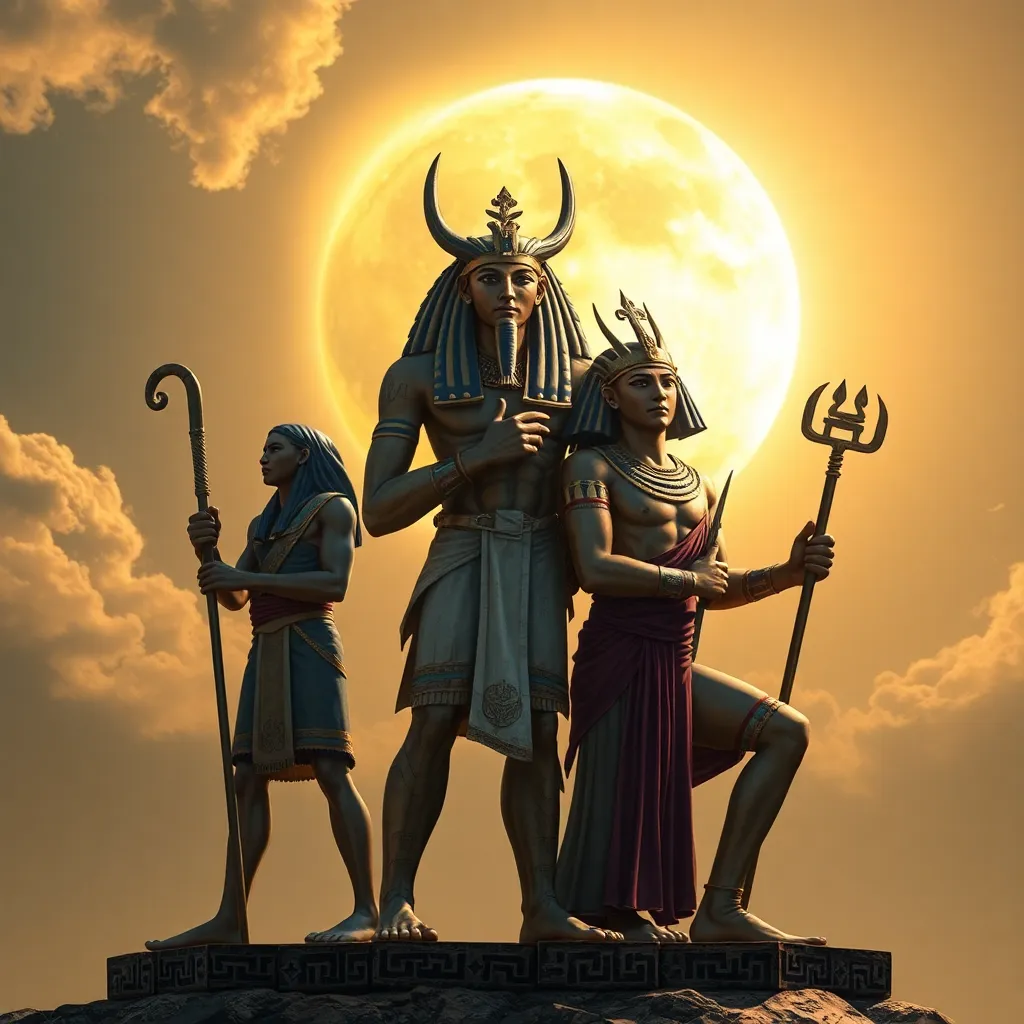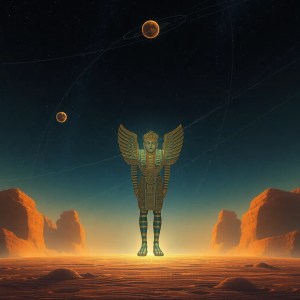The Relationship Between Atenism and Other Egyptian Cults
I. Introduction
Atenism, a unique form of worship that emerged in ancient Egypt, centered around the sun disk deity known as Aten. This monotheistic-like belief system was established during the reign of Pharaoh Akhenaten, who sought to shift the religious landscape of Egypt from polytheism to a more singular focus on Aten.
Ancient Egyptian religion was characterized by a rich tapestry of gods and goddesses, each governing various aspects of life, nature, and the afterlife. The purpose of this article is to explore the complex relationship between Atenism and other Egyptian cults, highlighting its distinct beliefs, practices, and the impact it had on the broader context of Egyptian spirituality.
II. Historical Context of Atenism
Atenism emerged during a transformative period in Egyptian history, particularly during the reign of Akhenaten (circa 1353-1336 BCE). This era was marked by significant socio-political changes, including shifts in power dynamics and religious practices.
The socio-political landscape of ancient Egypt at the time was dominated by the powerful priesthoods of various gods, particularly Amun. Akhenaten’s reign challenged these established norms, leading to a pronounced break from traditional polytheism. Atenism represented not just a new religious practice but also a political maneuver to consolidate power under the pharaoh.
III. Core Beliefs and Practices of Atenism
The core belief of Atenism was the worship of Aten as the singular, all-powerful god. Unlike the multitude of gods in traditional Egyptian religion, Aten was seen as the sole deity who created and sustained life.
Key elements of Atenism included:
- Worship of the Aten: Aten was depicted as a solar disk, radiating life-giving rays towards humanity.
- Symbolism and Rituals: The sun’s daily journey was viewed as a divine cycle, with rituals focusing on the sun’s rising and setting.
- Differences in Worship: Unlike the elaborate temples and priestly rituals of other gods, Atenism emphasized personal devotion and the direct connection between the worshipper and the deity.
This focus on a singular god marked a significant departure from the pluralistic nature of Egyptian religious practices, setting Atenism apart from its contemporaries.
IV. Comparative Analysis with Major Egyptian Cults
A. Atenism vs. the Cult of Amun
The Cult of Amun was one of the most powerful religious factions in ancient Egypt, with a vast network of temples and a strong priesthood. The rivalry between Atenism and the Cult of Amun was both theological and political.
1. Historical Rivalry
Akhenaten’s establishment of Atenism directly challenged the supremacy of Amun, leading to conflicts that would have lasting repercussions for both cults.
2. Differences in Worship and Theology
While the Cult of Amun emphasized the importance of intermediaries (priests) in connecting with the divine, Atenism promoted a more personal, direct relationship with Aten. This shift represented a radical change in the understanding of divine interaction.
B. Atenism vs. the Cult of Osiris
The Cult of Osiris was central to beliefs regarding the afterlife and resurrection. In contrast, Atenism offered a different perspective on life after death.
1. Afterlife Beliefs and Practices
While the Cult of Osiris focused on the afterlife, resurrection, and the judgment of souls, Atenism placed less emphasis on these concepts, concentrating instead on life in the present and the worship of the sun.
2. Role of the Pharaoh in Each Cult
In the Cult of Osiris, the pharaoh was seen as a divine ruler who would be resurrected like Osiris. In Atenism, the pharaoh was considered a direct intermediary between Aten and the people, though the focus was more on the sun god than on the afterlife.
V. Atenism’s Influence on Other Cults
Atenism’s influence extended beyond its immediate followers, leaving an imprint on various other religious practices in ancient Egypt.
Key influences included:
- Adoption of Atenist Elements: Some aspects of Atenism, such as its emphasis on a singular deity, began to seep into other cults.
- Syncretism: The blending of Atenist beliefs with existing polytheistic traditions led to a more complex religious landscape.
- Legacy in Later Thought: Atenism contributed to discussions about monotheism and influenced later religious developments in Egypt.
VI. The Decline of Atenism
The decline of Atenism began shortly after the death of Akhenaten. Several factors contributed to its fall:
- Restoration of Traditional Beliefs: Following Akhenaten’s death, there was a swift return to the worship of traditional gods, particularly Amun.
- Political Changes: The subsequent pharaohs sought to erase Atenism from memory, destroying temples and altering monuments.
- Historical Interpretations: Scholars have debated the reasons behind Atenism’s decline, often attributing it to the resistance of the powerful priesthoods of traditional gods.
VII. Modern Perspectives on Atenism
In contemporary times, there has been a resurgence of interest in Atenism among scholars and historians. This renewed focus highlights several aspects:
- Scholarly Interest: Researchers are increasingly examining Atenism’s role in the evolution of religious thought and its potential influence on later monotheistic religions.
- Relevance in Discussions of Monotheism: Atenism is often cited in discussions about the nature of monotheism and its historical roots.
- Cultural Representations: Artistic and cultural representations of Atenism continue to inspire modern interpretations of ancient Egyptian spirituality.
VIII. Conclusion
In summary, Atenism represents a significant, albeit brief, chapter in the history of Egyptian religion. Its core beliefs and practices established a unique framework that contrasted sharply with the traditional polytheistic cults of the time.
The lasting impact of Atenism on Egyptian religion and culture is evident in its influence on subsequent religious practices and its contributions to discussions about monotheism. For those interested in further research, the exploration of Atenism’s relationship with other cults offers rich insights into the complexity of ancient Egyptian spirituality.




